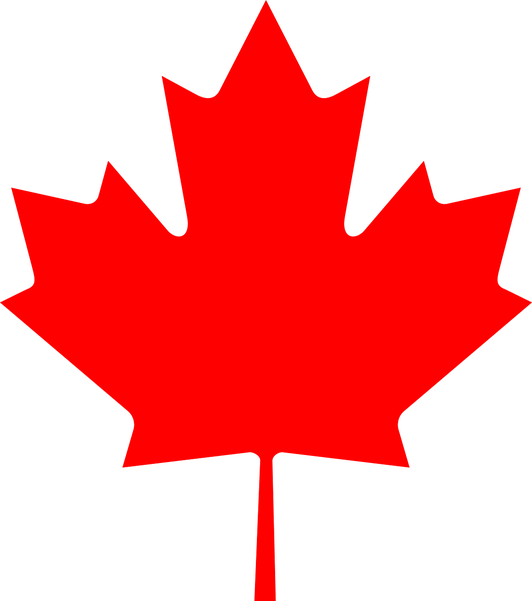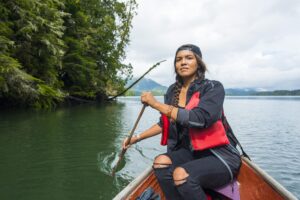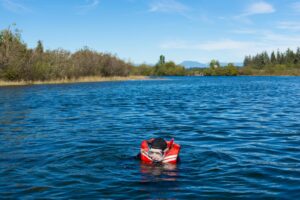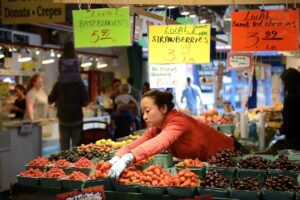Die Provinz British Columbia ist seit Jahrtausenden die Heimat der First Nations. Lange unterdrückt, leben die indianischen Kulturen jetzt wieder auf.
British Columbia has been home to the First Nations for thousands of years. After a long period of suppression, indigenous cultures are now experiencing a rebirth.
Dieser Beitrag von mir ist im Edelweiss Magazin erschienen, dem Inflight-Magazin der gleichnamigen Airline. Er wurde nun von Destination Canada mit dem Go Media Award ausgezeichnet – dem Preis für die beste deutsche Reisegeschichte über Kanada.
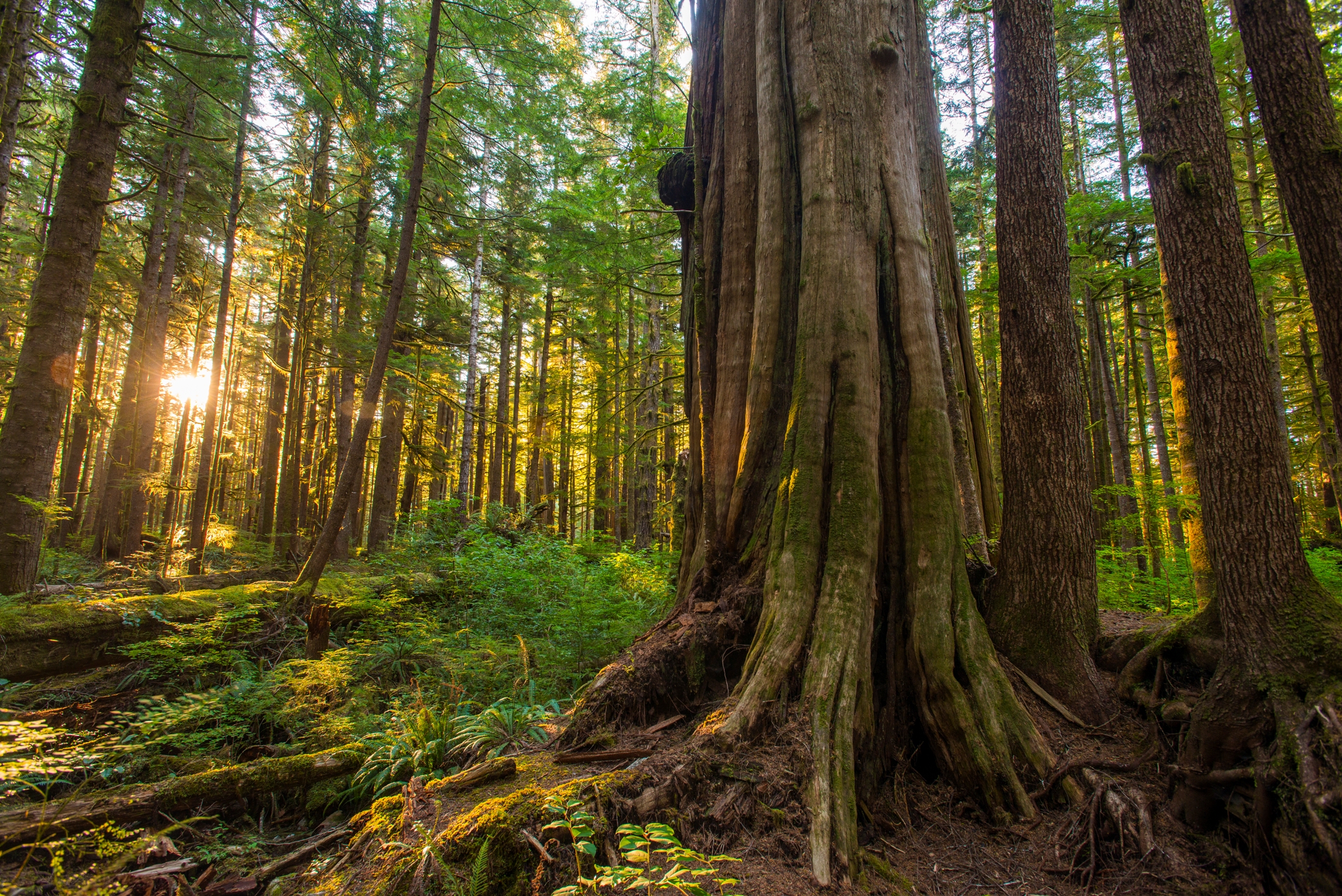
Baumriesen ragen in den blauen Himmel, sie sind 50 Meter hoch. Von ihren Ästen baumeln Flechtenbärte, grünes Moos bedeckt ihre zerfurchten Stämme. «Es sind sprechende Bäume», sagt Erica Vader mit geheimnisvoller Stimme. «Jeder von ihnen erzählt eine Geschichte.» Die studierte Kulturanthropologin, Pferdeschwanz, Jeans und Sportschuhe, wirkt auf den ersten Blick wie eine der vielen Studentinnen, die in Vancouvers Stanley Park ihre Freizeit verbringen. Doch die 23-Jährige ist an diesem Vormittag als Vertreterin der Shishalh unterwegs, einer von über 200 First Nations in Kanadas Provinz British Columbia.
Giant trees stretch 50 metres up into the blue sky, beards of lichen dangling from their branches, green moss covering their furrowed trunks. “Those are talking trees”, says Erica Vader, “and each one of them tells a story.” With her pony tail, jeans and trainers, the 23-year-old cultural anthropologist could be mistaken for one of the many students who spend their free time in Vancouver’s Stanley Park. This aternoon, however, she is acting as representative of the Shishalh, one of over 200 First Nations tribes in British Columbia.
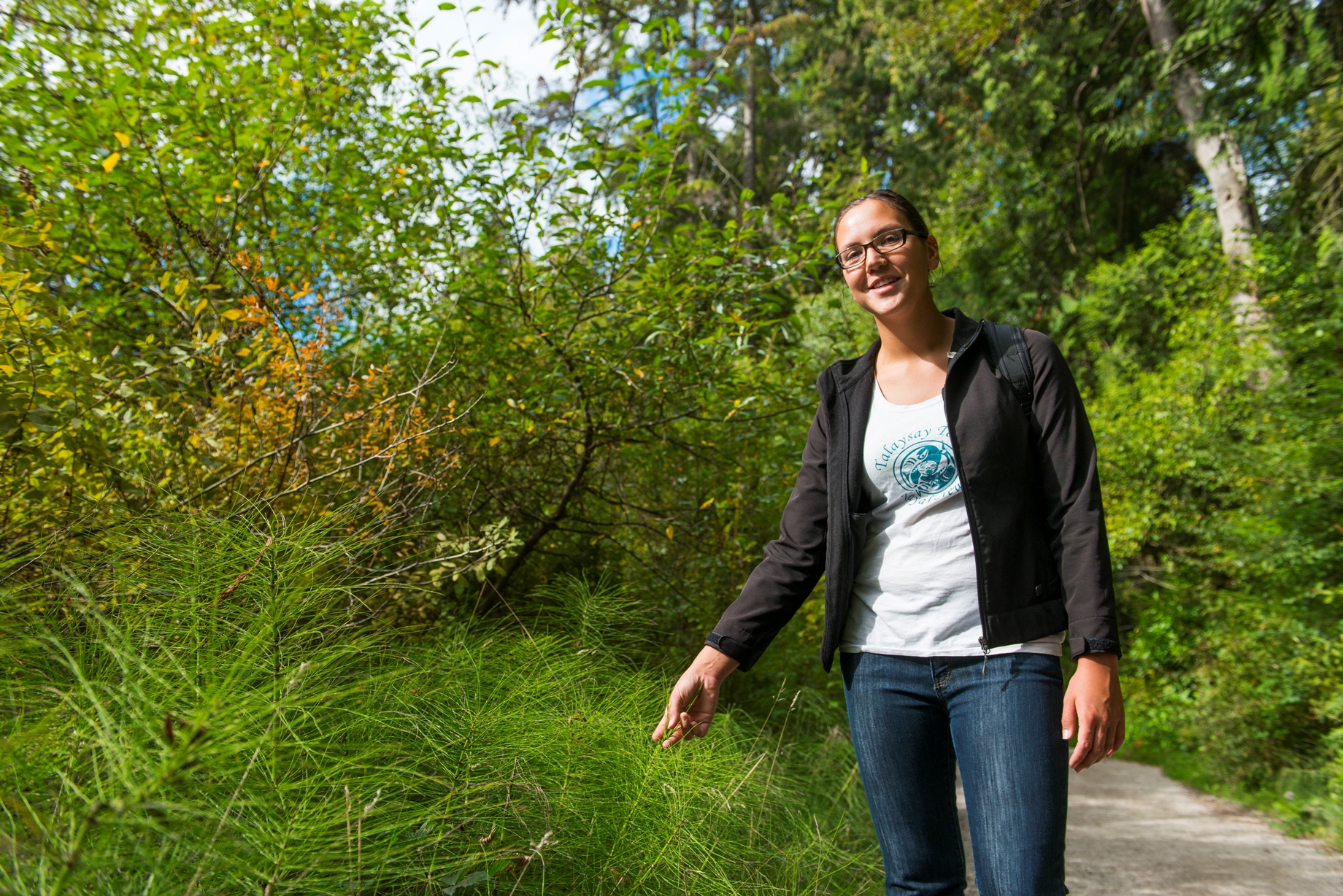
Erica Vader zeigt den Besuchern die indianische Seite des größten Stadtparks Kanadas – für sie ist das eine Herzensangelegenheit: «Essbare Pflanzen und das Überleben in der Wildnis haben mich schon als kleines Mädchen interessiert», sagt sie. Die junge Shishalh ist im Küstenörtchen Sechelt nahe Vancouver mit dem traditionellen Wissen ihres Volkes aufgewachsen: Ihre Großmutter zeigte ihr, welche Beeren und Kräuter am besten schmecken, ihre Tanten lehrten sie das Weben mit Zedernrinde.
Erica Vader shows visitors the indigenous side of Canada’s largest city park. For her, it is a matter of the heart. “Even as a little girl I was interested in edible plants and survival in the wilderness”, she says. Near Vancouver, in the coastal town of Sechelt, this young Shishalh woman grew up in the traditional knowledge of her people; her grandmother showed her which berries and herbs taste best, her aunts taught her how to weave with cedar bark.
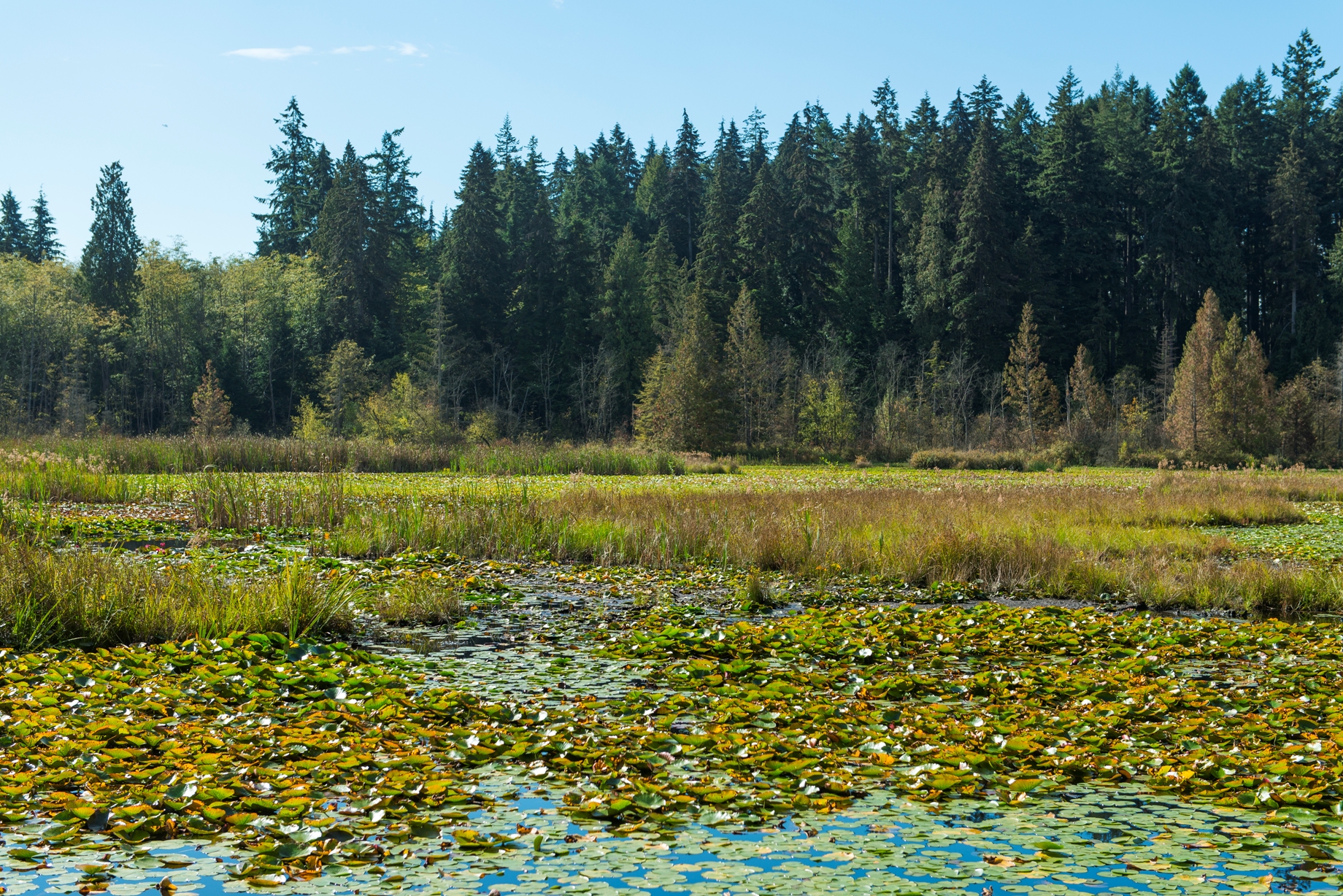
Bis zur Ankunft der Weißen Ende des 18. Jahrhunderts führten die Ureinwohner ein Leben im Überfluss: «Der Ozean lieferte uns Fisch und Meeresfrüchte, der Wald war Lebensmittelladen und Drogerie, Apotheke und Baumarkt zugleich», sagt die selbstbewusste junge Frau. So gehörte auch der Stanley Park jahrtausendelang zum Jagd- und Sammelgebiet der Indianer. «Wir haben deshalb bis heute offiziell das Recht, hier zu ernten», sagt Vader, die sich heute mit ihren Parkführungen das Leben im hippen Vancouver verdient.
Until the arrival of the Europeans in the late 18th century, Canada’s Aboriginal people led a life o abundance. “The ocean gave us fish and shellfish, the forest served as food market, drugstore, chemist’s and building centre combined”, the confident young woman says. What is now Stanley Park was a hunting and gathering region for Aboriginal people for thousands of years. “Even today we officially have the right to harvest here”, says Vader, who nowadays works as a park guide in Vancouver.
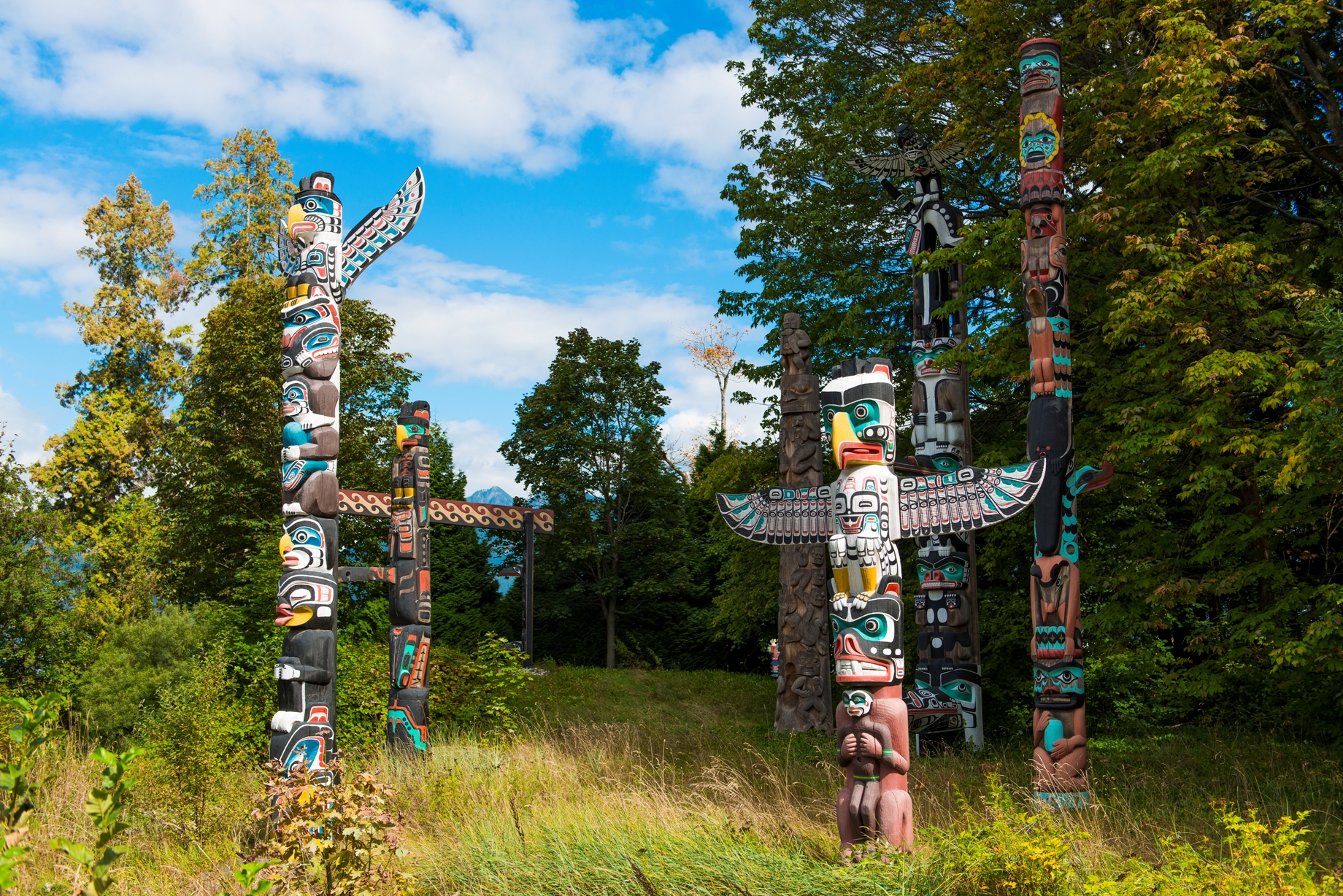
Zu jedem Baum, jedem Strauch, jeder Blüte weiß sie etwas zu erzählen: Rindentee von der Küstentanne hilft gegen Grippe, das Holz der Douglasie wurde für Rauchzeichen verwendet, Schachtelhalme dienten als Zahnseide. Und wenn man die Nadeln der Hemlocktanne ins Wasser hängt, legen Heringe ihre Eier darauf ab. „Hmm, Fischeier mit getrockneten Beeren sind eine Delikatesse für uns», sagt die junge Frau seufzend beim Blick auf den gigantischen Nadelbaum.
She can tell you something about each tree, each shrub, each flower. Tea made from grand fir bark helps fight the flu, the wood of the Douglas fir was used for smoke signals, horsetail plants served as dental floss. And if you hang Hemlock fir needles in water, herring will lay their eggs on them. «Yum, fish roe with dried berries is a delicacy for us», Esther Vader says, as she gazes at the enormous conifer.
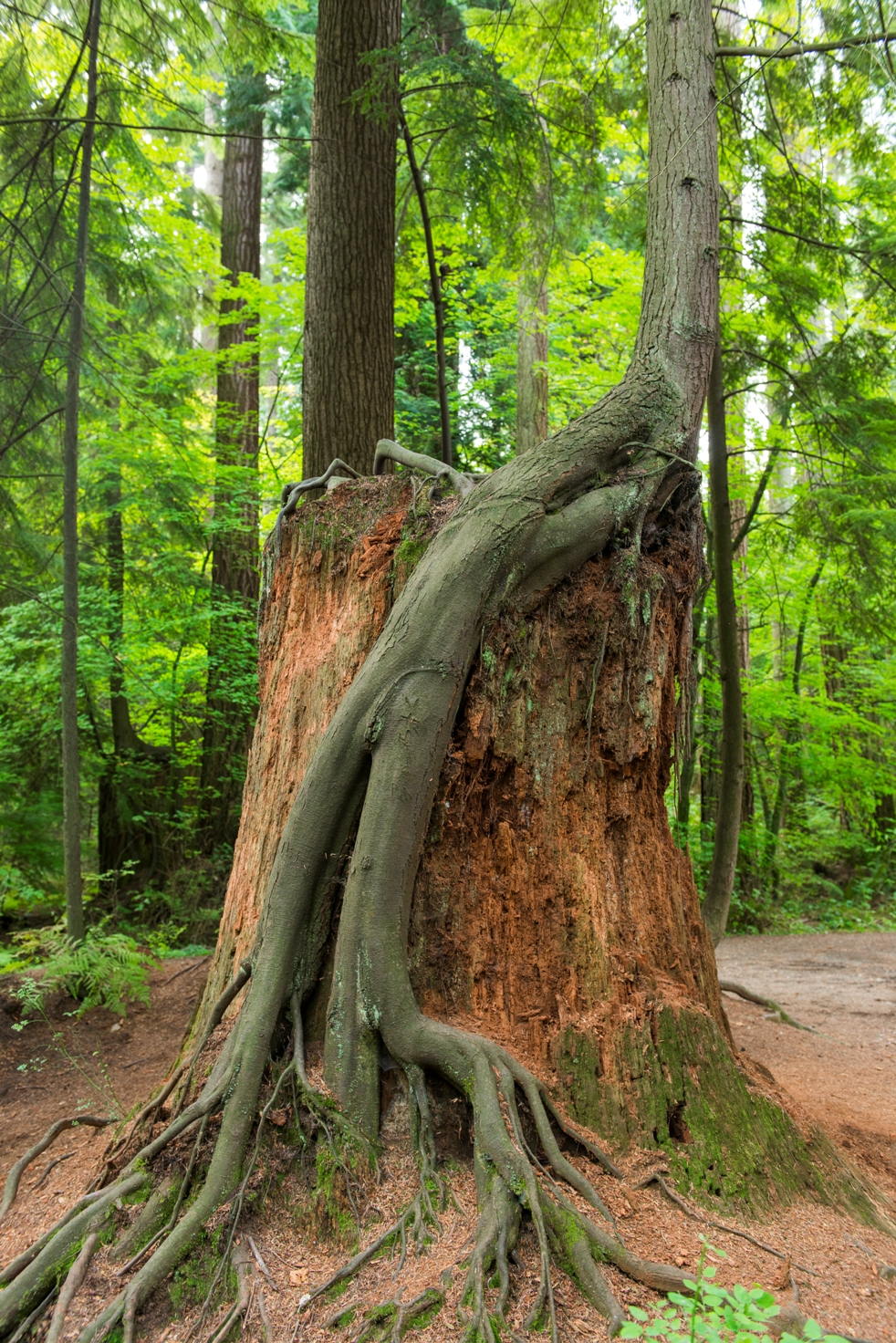 Dann deutet sie auf einen besonders mächtigen Stamm: eine Western Red Cedar, ein Riesen-Lebensbaum. Die Indianer bauen daraus ihre traditionellen Totempfähle – acht davon stehen im Stanley Park – und Einbaumkanus für bis zu 40 Passagiere. Aus der Rinde fertigen sie Körbe und Hüte. Das Holzmehl vermischten sie früher mit Bärenfett und Fischöl zu einer Hautcreme. „Ganz schön mühsam, heute nehmen wir lieber Nivea“, sagt Erica Vader und lacht.
Dann deutet sie auf einen besonders mächtigen Stamm: eine Western Red Cedar, ein Riesen-Lebensbaum. Die Indianer bauen daraus ihre traditionellen Totempfähle – acht davon stehen im Stanley Park – und Einbaumkanus für bis zu 40 Passagiere. Aus der Rinde fertigen sie Körbe und Hüte. Das Holzmehl vermischten sie früher mit Bärenfett und Fischöl zu einer Hautcreme. „Ganz schön mühsam, heute nehmen wir lieber Nivea“, sagt Erica Vader und lacht.
Then she points to a particularly mighty trunk – a western red cedar. The Aboriginal people use this tree’s wood to carve their traditional totem poles – there are eight in Stanley Park – and dugout canoes, which can hold up to 40 passengers. They fashion baskets and hats from its bark. They used to mix its sawdust with bear fat and fish oil, to make skin cream. „It’s a lot o work; today we prefer Nivea“, Erica Vader laughs.
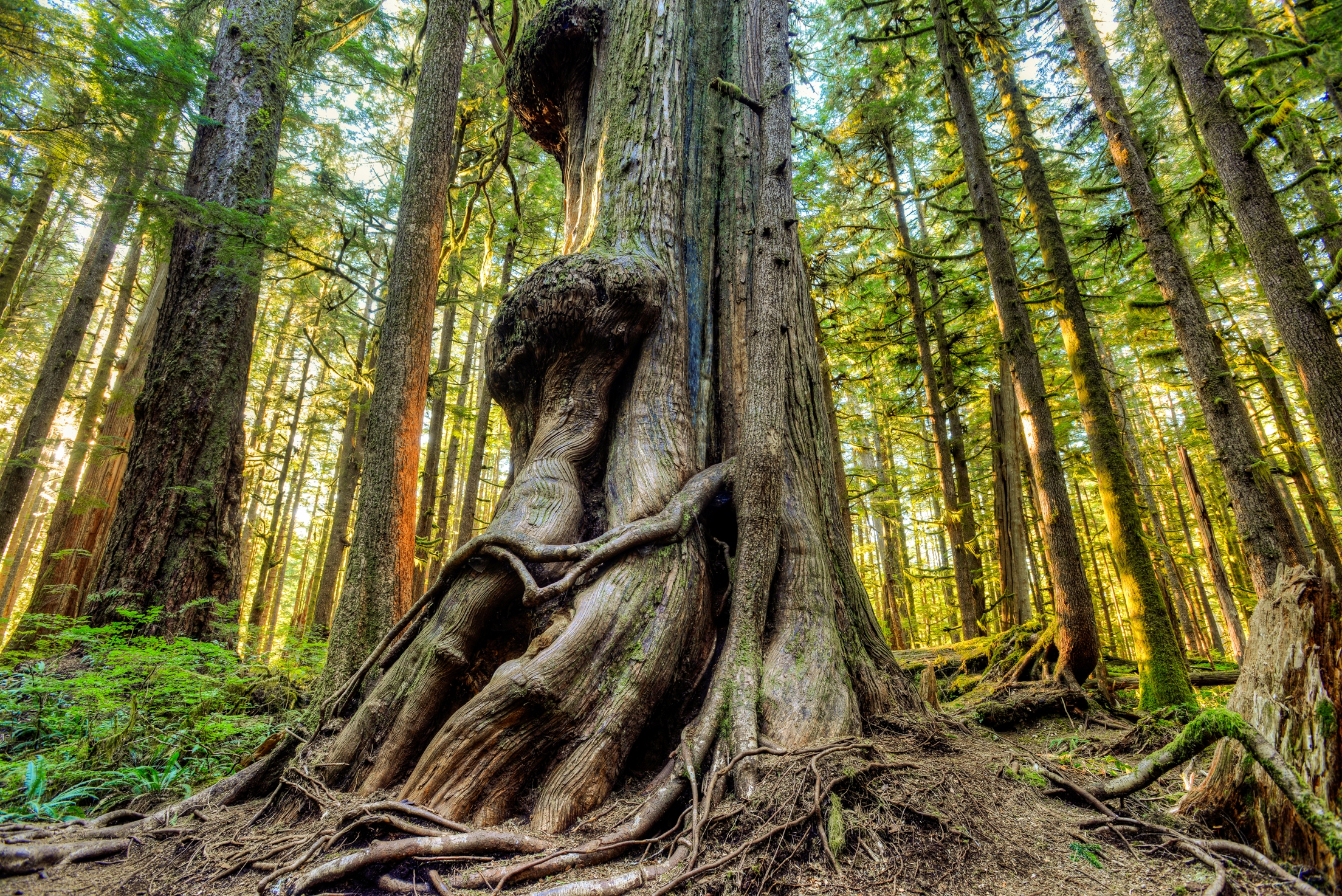
Sie erzählt von ihrem Stamm, der zeitweise fürchtete, dass seine traditionelle Sprache Sháshíshálh ausstirbt. Eine bedrohliche Situation für ein Volk, dessen Geschichte immer nur mündlich überliefert wurde. Es ist das Resultat staatlicher Unterdrückung: Die kanadische Regierung verbot lange Zeit ihre Zeremonien und steckte die indianischen Kinder in Residential Schools, in Internate fern ihrer Eltern, in denen sie ihrer Kultur entfremdet und teilweise auch misshandelt wurden. Holz- und Energieunternehmen beuteten indessen die Stammesgebiete aus.
She tells of her tribe, which once feared that its traditional language, Sháshíshálh, would die out – an ominous situation for a people whose history has always been passed on orally. This was the result of statesponsored suppression. For a long time, the Canadian government forbade them to conduct their native ceremonies and placed their children in residential schools, boarding schools far away from their parents, where they were estranged from their culture and sometimes abused. Meanwhile, timber and energy companies exploited the tribal areas.

Doch seit einigen Jahren wendet sich das Blatt: Gerichte urteilen in Landfragen häufig zugunsten der Ureinwohner. Die letzte Residential School, schloss 1996 ihre Pforten; eine Kommission hat die Menschenrechtsverletzungen dokumentiert. Und während die Elterngeneration, die sogenannte „Lost Generation“, sich ihrer Sprache und Kultur überwiegend entfremdet fühlt, herrscht unter jungen Indianern Aufbruchstimmung. Sie suchen ihren Weg zwischen altem Groll und einem positiven Blick in die Zukunft.
Wie Erica Vader greifen viele das Wissen der Stammesältesten auf und lernen wieder ihre Sprachen. So hat ihr Stamm in langjähriger Arbeit mit Linguisten ein Wörterbuch erstellt, um die Sprache zu retten. Inzwischen beginnen nicht nur die Kinder in der Vorschule mit Sprachunterricht, sondern auch deren Eltern – um sich mit ihrem Nachwuchs auf Sháshíshálh unterhalten zu können. Sogar einige Weiße haben begonnen, die Sprache ihrer Nachbarn in den Küstenorten zu lernen.
This, however, has changed in recent years. Now courts often pass judgements in favour of the native tribes in land disputes. The last residential school closed its doors in 1996; a commission documented the human rights abuses which occurred there. And while their parents, the so called „lost generation“, feel predominantly alienated from their language and culture, young Aboriginal people are experiencing a sense of awakening. They are finding their way between the old resentments and a more positive view of the future.
Like Erica Vader, many of them are seeking the knowledge of their tribal elders, and learning their languages. To save its own language, her tribe created a dictionary, the product of many years’ collaboration with linguists. Meanwhile, not only are preschool children beginning to learn the language, but their parents as well – so that they can converse with their offspring in Sháshíshálh. Even some non-natives in the coastal towns have begun to learn the languages of their neighbors.
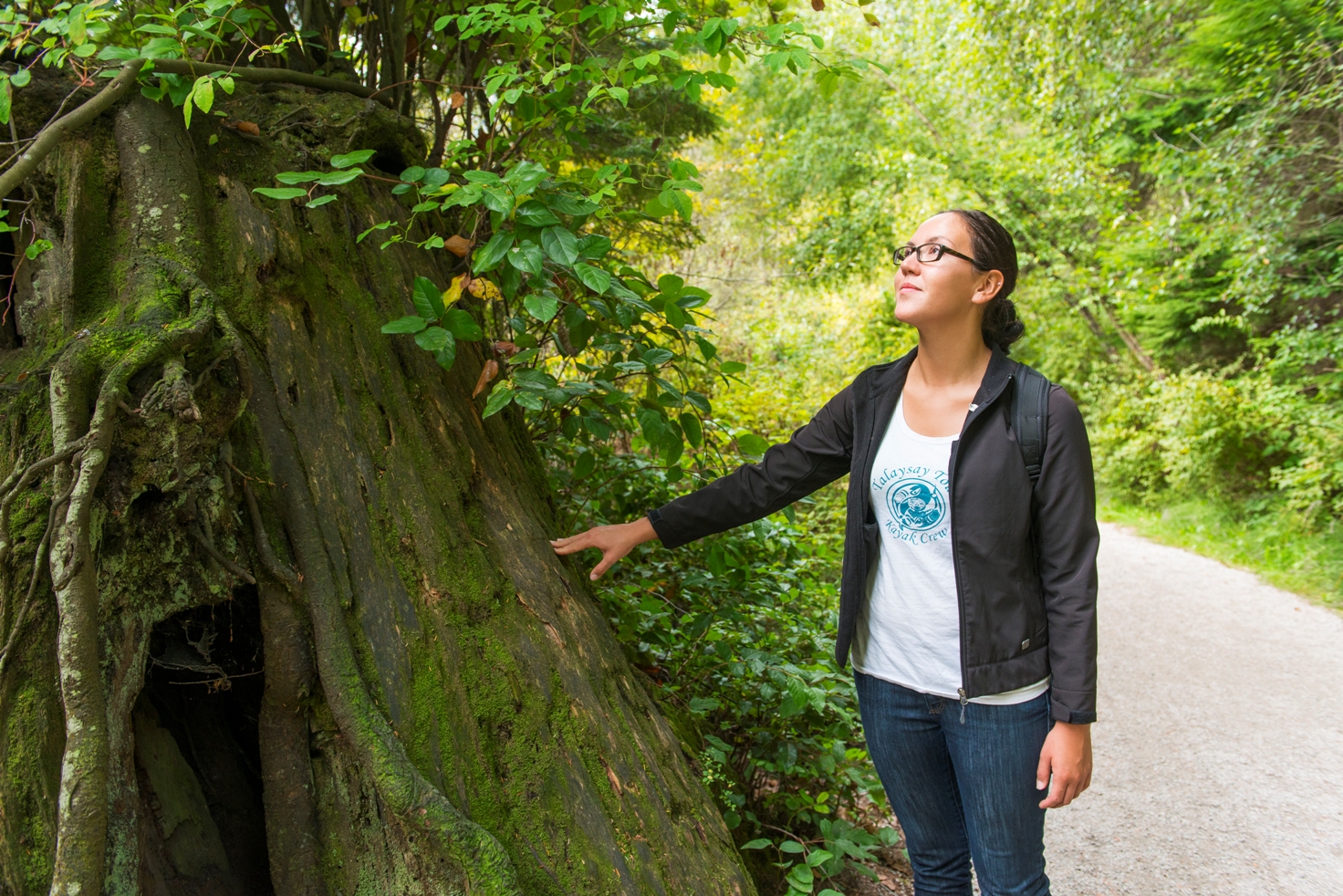
Alte Traditionen greift auch Inez Cook auf: in Form von Kochrezepten. Die quirlige Frau vom Stamm der Nuxálk hat gemeinsam mit einem Freund vor sieben Jahren das Salmon n‘ Bannock Bistro gegründet, das derzeit einzige indianische Restaurant der Stadt. Dabei ist die 54-Jährige eigentlich im Bewusstsein aufgewachsen, eine Weiße zu sein: Die Behörden nahmen sie als Kind ihren Eltern weg und gaben sie zur Adoption frei – ein weiteres Instrument der Zwangsassimilierung.
Inez Cook, too, has taken up old traditions – in the form of recipes. Seven years ago, this lively woman from the Nuxálk tribe opened the Salmon n’ Bannock Bistro together with a friend; it is presently the only First Nations restaurant in Vancouver. Cook, 54, was raised in white culture. As a child, she was taken from her parents by the authorities, and placed for adoption – another instrument o forced assimilation.
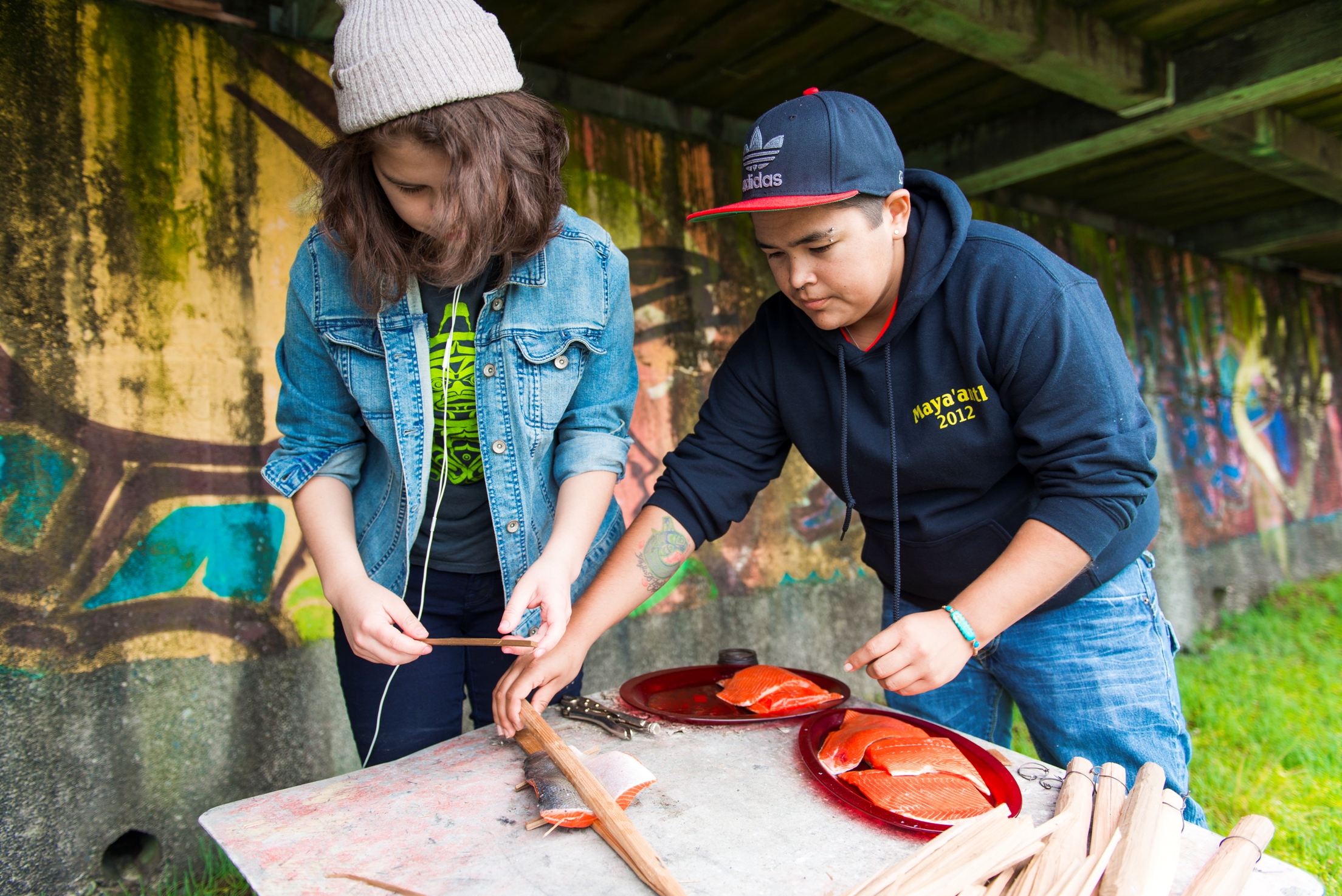
„Ich wollte mich lange Zeit nicht mit meiner indianischen Identität auseinandersetzen“, sagt Inez Cook, schicke Kurzhaarfrisur und modisches Outfit. „Erst als Erwachsene habe ich das nachgeholt.“ Inzwischen hat sie von ihrem Stamm in einer feierlichen Zeremonie ihren indianischen Namen „Snitsmana“ und ihre traditionelle Kleidung erhalten. Auch in die indigene Küche musste sie sich erst einarbeiten: „Als ich anfing, hatte ich noch keine Ahnung davon.“ Doch dann sammelte auf Reisen im ganzen Land Rezepte von Ureinwohnern und probierte sie aus.
„For a long time, I didn’t want to deal with my aboriginal identity“, says Cook, fashionably dressed and with a short hairstyle. „It was only as an adult that I was able to make up for that.“ She was given the indigenous name „Snitsmana“ and her tribe’s traditional dress in a solemn ceremony. She had a lot to learn about indigenous cuisine. „.When I started, I knew nothing about it.“ But then she collected recipes from Aboriginal people while travelling around the entire country, and tried them out.
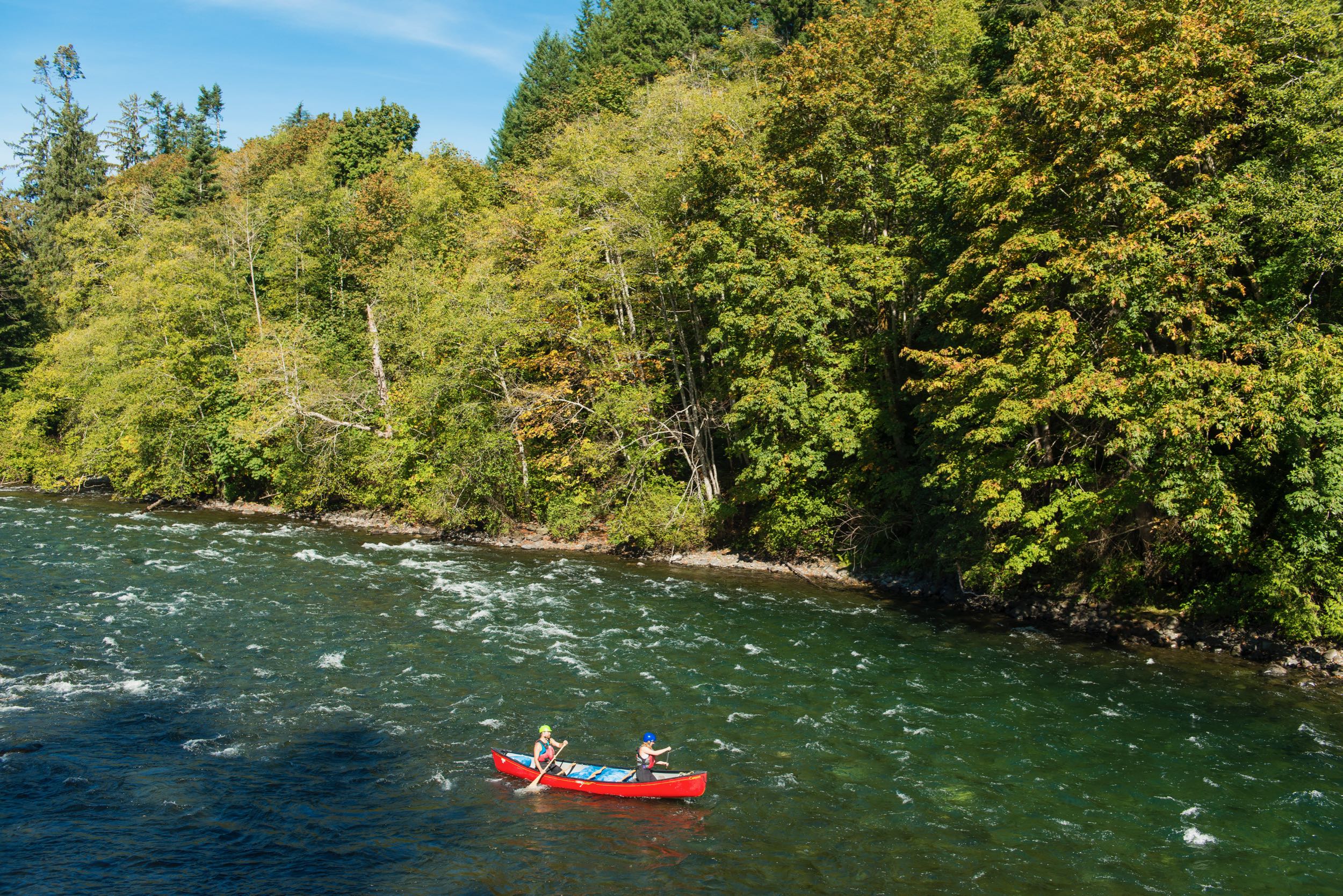
An den Wänden ihres Lokals am West Broadway hängt indianische Kunst, alle Angestellten sind Ureinwohner, und auch die Zutaten bis hin zum Wein stammen aus indianischer Produktion. Mit dem Salmon n‘ Bannock hat Inez Cook einen Nerv getroffen: Auf TripAdvisor rangiert es regelmässig unter den Top 5 von knapp 2.900 Restaurants der Stadt. Auf der Karte stehen Bison-Rippchen, Wurst vom Wapitihirsch und Bannock, das typisch indianische Brot.
Indigenous art hangs on the walls of her restaurant on West Broadway, all the employees are Aboriginal people and the ingredients are produced by Aboriginal companies, even the wine. Inez Cook struck a chord with the Salmon n’ Bannock Bistro: TripAdvisor regularly lists it in the Top 5 of the city’s nearly 2,900 restaurants. The menu includes bison ribs, Canadian elk sausage and bannock, the typical Aboriginal bread.
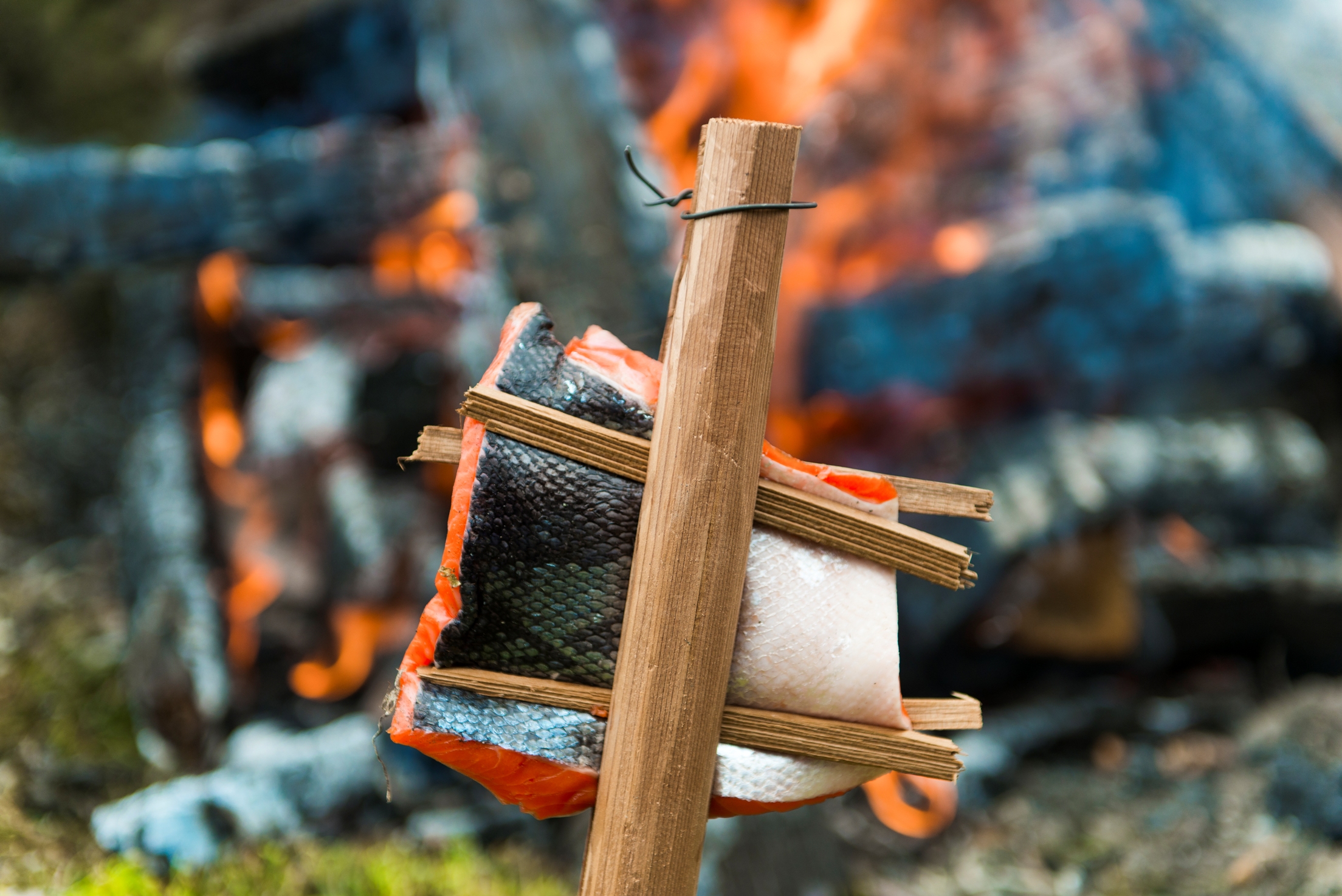
„Viele überlieferte Zutaten können wir gar nicht anbieten“, sagt die Gastgeberin. So ist etwa Bärenfleisch nicht gesund – und wer möchte schon das Nationaltier Biber verspeisen? Dafür gab es einmal Karibu, die nordamerikanische Variante des Rentiers: „Wir haben fünf Jahre gebraucht, um eine Portion zu ergattern. Sie war so klein, dass wir das Fleisch als Appetizer im Goldfischglas serviert haben. Nach fünf Minuten war alles ausverkauft.“ Doch die meisten Gäste kommen, um vom Wildlachs zu kosten, den es in allen Variationen gibt: gepökelt oder mariniert, über Salbeiblättern geräuchert und kandiert als „Indian Candy“.
„There are many traditional ingredients that we can’t offer“, says Cook. Bear meat, for instance, isn’t healthy. And who wants to eat beaver, Canada’s national symbol? Instead, there’s caribou, the North American version of reindeer. „It took us five years to get a hold of one piece. It was so small that we served it as an appetizer, in a goldfish bowl. It was sold out within five minutes.“ Most guests, however, come to try the wild salmon in its many variations – cured, marinated, smoked over sage leaves, or the candied version called „Indian candy“.

Der Edelfisch hat in der Küstenlandschaft mit ihren Fjorden und Inseln seine Heimat. Für Feinschmecker ist der „Wild Salmon“ eine Delikatesse – für die First Nations dagegen gehörte er zur Grundnahrung. Aufgeregt warten die Ureinwohner auch heute noch jeden Sommer auf die Rückkehr der Lachse. Ab Mitte Juli suchen sie ihre Plätze zum Laichen: zuerst der Pink Salmon, später der Chinook, im Spätherbst folgt als Nachzügler der Chum.
These coastal areas, with their fjords and islands, are home to the wild salmon. For gourmands, it is a delicacy. For the First Nations people, however, it is part of their staple diet. Even today, the Aboriginal people excitedly await the salmon’s return each summer. Starting in mid-July, these fish arrive and seek a place to spawn; first pink salmon, later chinook; and finally chum at the end of autumn.
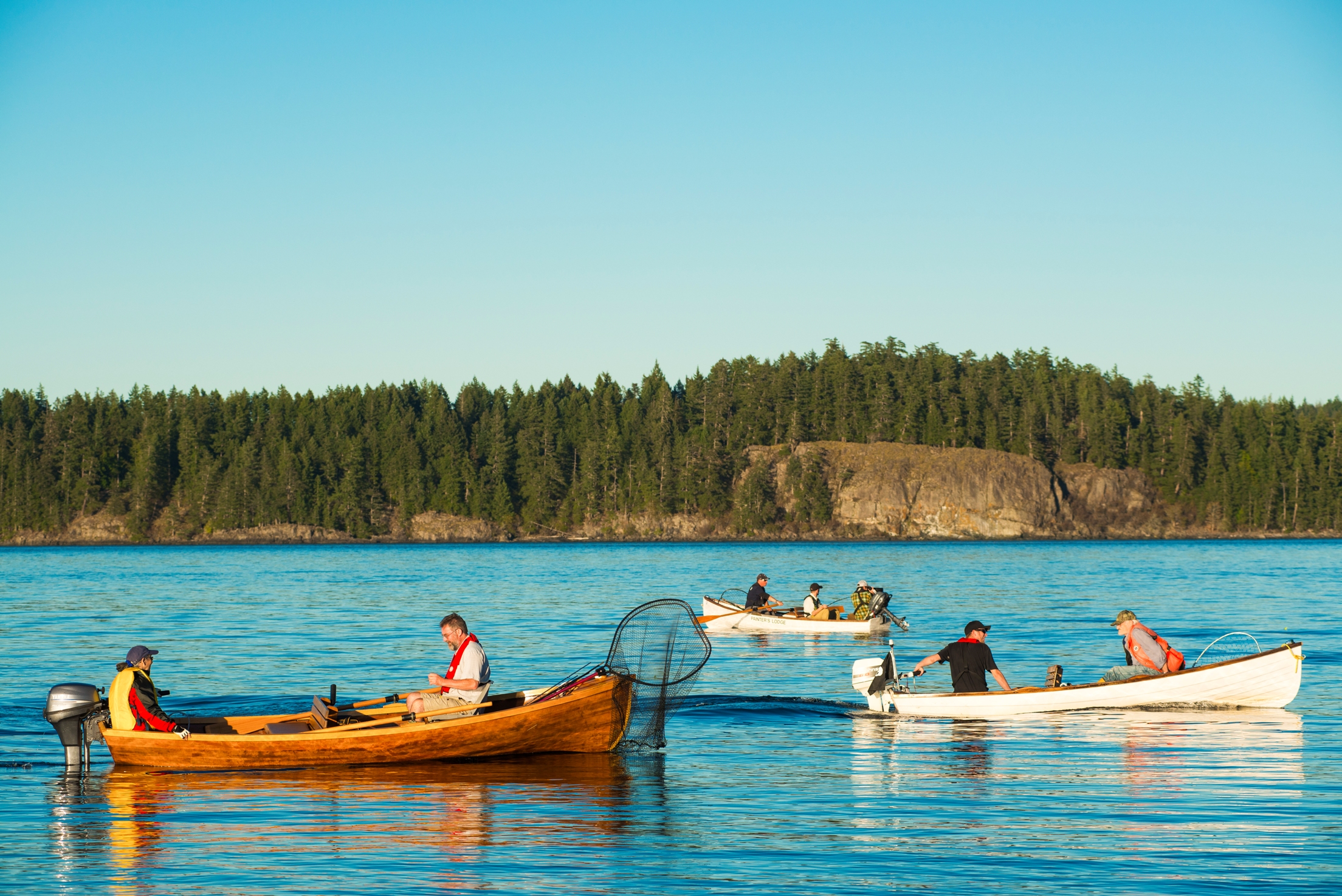
Doch seit einigen Jahren nimmt die Zahl der Lachse kontinuierlich ab. Im vergangenen Herbst schwammen sogar Grizzly-Bären auf Nahrungssuche vom Festland nach Vancouver Island – ein Alarmsignal, denn auf Vancouver Island gibt es eigentlich keine Grizzlys. „Daran sind die Lachsfarmen schuld“, sagt Mike Willie. „Sie verfüttern Medikamente, die in die Nahrungskette gelangen.“
In the past years, however, the number of salmon has been steadily decreasing. Last autumn, grizzly bears even swam from the mainland to Vancouver Island in search of food – an alarm signal, because there are normally no grizzlies on Vancouver Island. „The salmon farms are to blame“, says Mike Willie. „They’re putting medications in the feed which find their way into the food chain.“
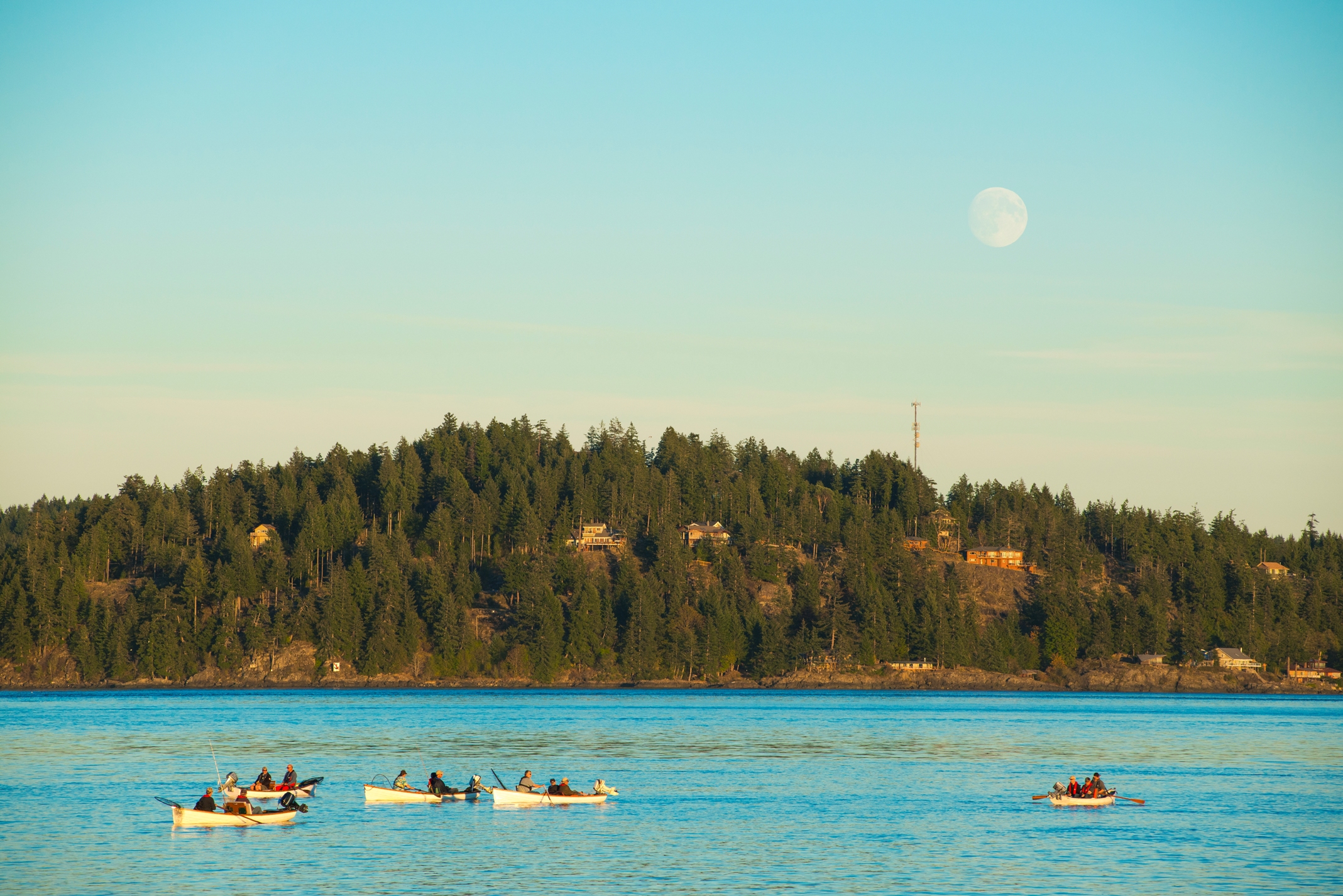
Der junge Kwakwaka’wakw-Indianer engagiert sich für die Stammespolitik, er kämpft gegen Lachsfarmen. Nicht nur mit Demonstrationen und Lobbyarbeit, sondern auch über die sozialen Medien: Mike Willie schickt per Facebook und Twitter die neuesten Infos an seine Mitstreiter – und als Zugabe zum Lernen der Stammessprache auch ein „Wort des Tages“: „Gwabała“ ist der Nordwind und „xwaxwtsa̱n“ heisst „Kanu fahren“.
The young Kwakwaka’wakw is active in tribal politics, engaging in the fight against salmon farms; not just with demonstrations and lobbying, but also through social media. Mike Willie sends out the latest news to his fellow activists via Facebook and Twitter – and, as a bonus, promotes the language of the tribe with a „Word o the Day“: „Gwabała“ is the north wind, and „xwaxwtsa̱n“ means „to paddle a canoe“.
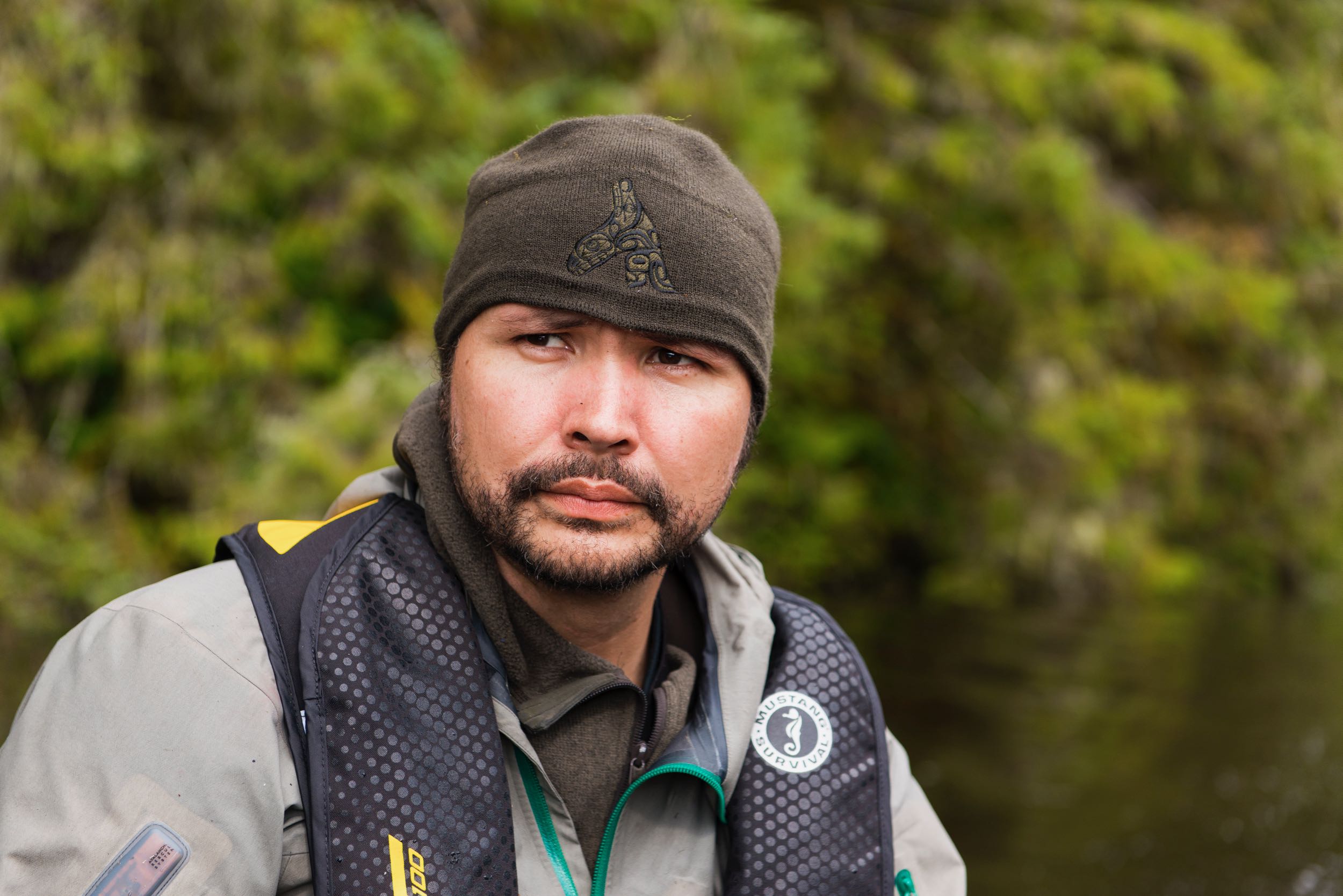
Es ist früher Morgen in Port McNeill auf Vancouver Island. Der Hafen liegt noch im Dämmerlicht, als Mike Willie – dick eingepackt in wasserdichte Hose und Boots – das kanariengelbe Motorboot seines Tourunternehmens Seawolf Adventures anwirft. Mit dröhnendem Motor steuert er in die geschützte Inselwelt des Great Bear Rainforest. An Land erstreckt sich hier das Revier der Bären, Pumas und Wölfe, im Wasser tummeln sich Schwertwale – und Lachse.
It’s early morning in Port McNeill on Vancouver Island. The harbour is still bathed in morning twilight when Mike Willie – wrapped up in waterproof trousers and heavy boots – starts up the canary-yellow motorboat he uses in his tour business, Seawolf Adventures. Motor droning, he navigates the protected islands of the Great Bear Rainforest. On land, this extends over the territories of bears, pumas and wolves; orcas – and, yes, salmon – frolic in the water.
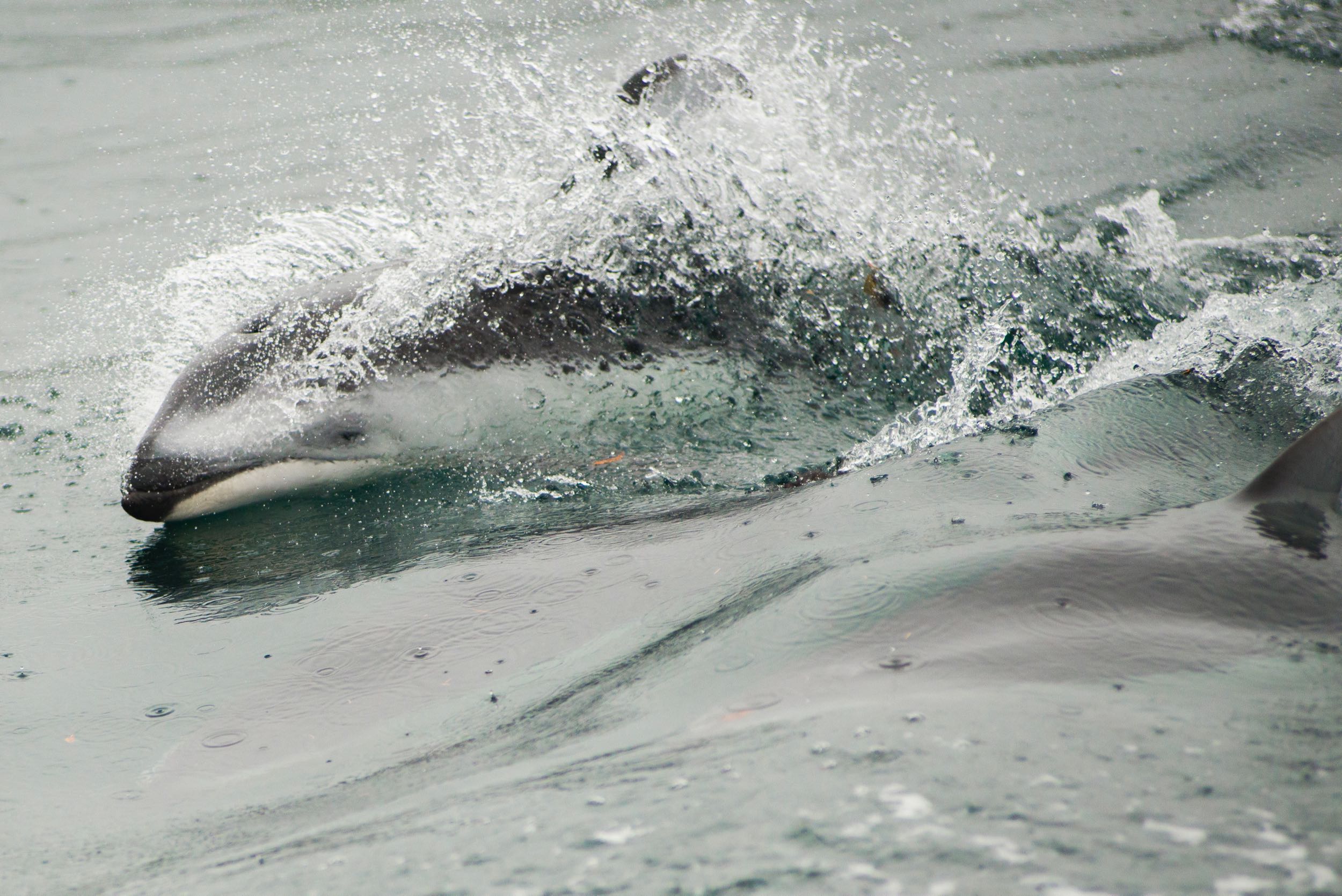
Bald taucht das Boot in das Labyrinth aus Kanälen und Inseln. Manche sind nur kahle Felsen mit dösenden Seelöwen. Ihr kehliges Grunzen hört man schon von weitem. Auf anderen Inseln wächst dichter Regenwald – die Äste wirken entlang der Flutlinie wie mit dem Rasiermesser abgeschnitten. Das Boot zerteilt Seetang so dick wie Ankertaue.
The boat soon enters a labyrinth o canals and islands. Some of these are just barren rocks with snoozing sea lions. You can hear their throaty grunting from quite a distance away. Other islands are covered with thick rainforest – the branches along the flood line look as if they were cut with a razor. The boat slices through seaweed that’s as thick as anchor ropes.
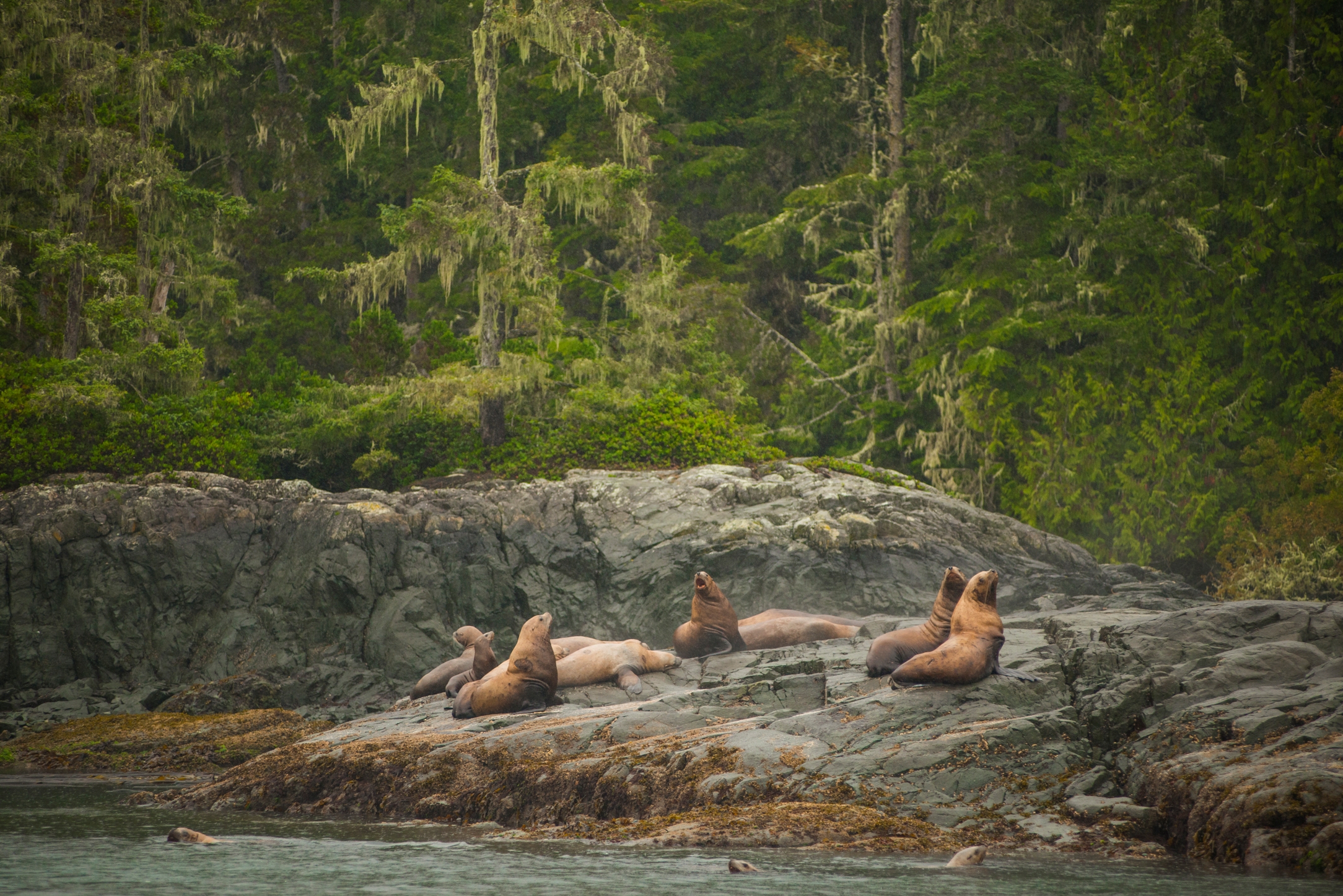
„Ich erlebe diese Natur fast jeden Tag“, sagt Mike, der aus dem Dorf Kingcome inmitten der Fjordlandschaft stammt. „Meine Stammesgenossen sollten ebenfalls hier rauskommen und ihre Wurzeln spüren. Aber sie stecken im Reservat fest.“ Viele hätten die Verbindung zu dieser Gegend verloren, seien lethargisch geworden. Er deutet auf eine Bucht mit weißem Strand: „Das ist die Heimat meiner Vorfahren. Der Entdecker George Vancouver zählte hier Ende des 18. Jahrhunderts mindestens 70 Kanus.“
„I experience this nature almost every day“, says Mike, who comes from the village of Kingcome, tucked in the fjord landscape.“ My people should come out here too, and get a sense of their roots. But they like to stay put on the reservation.“ Many of them have lost the connection to this area, have grown lethargic. He points to a bay with white sand. „This is the home of my ancestors. The explorer George Vancouver counted at least 70 canoes here at the end of the 18th century.“
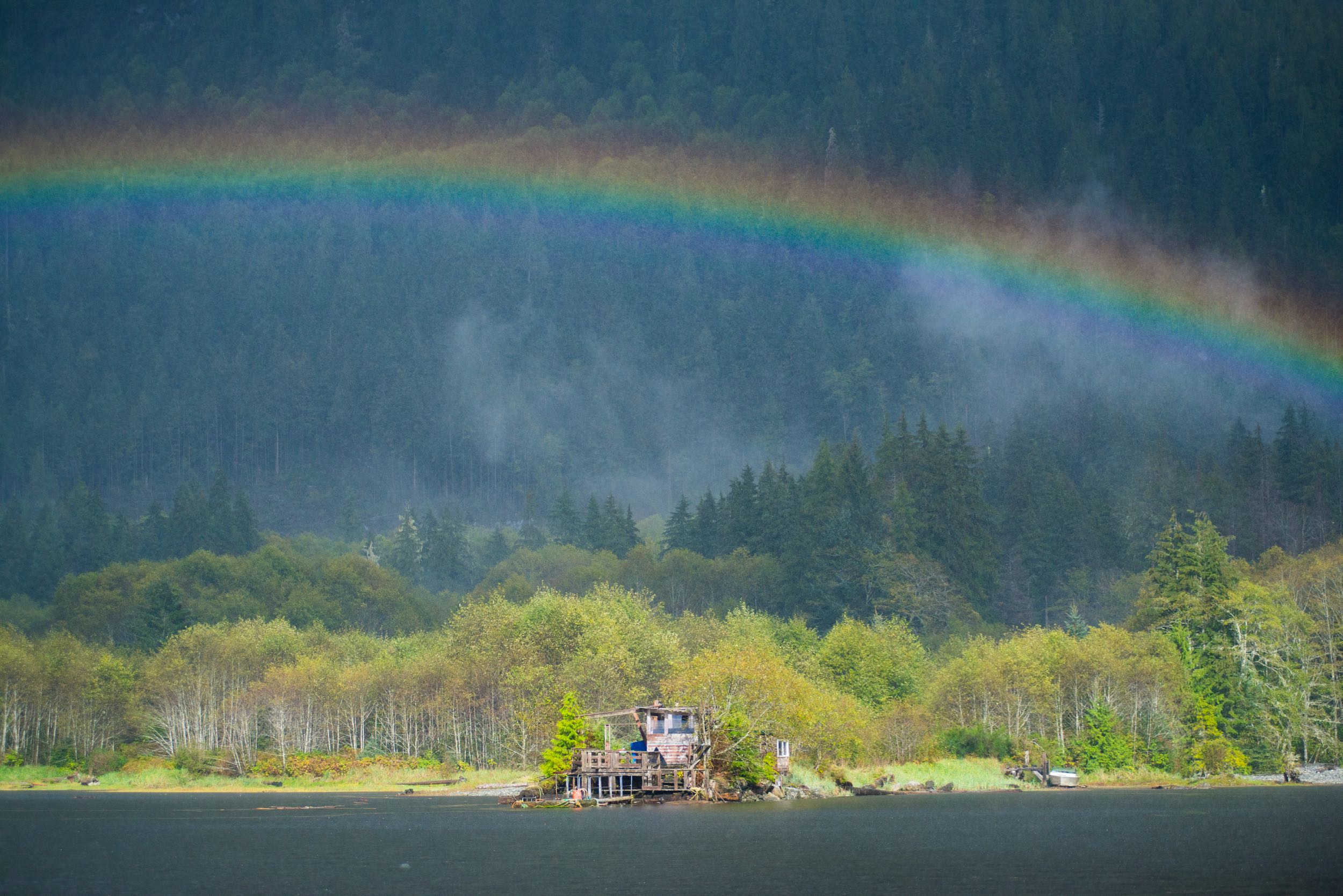
Mike Willie erzählt von seinen Ahnen, die hier jagten und Handel trieben. Vom Schwertwal, den sie „Seewolf“ nennen, weil er seine Beute wie die Wölfe im Rudel fängt. Und von den Lachsfarmen auf ihrem Land, denen der Stamm kürzlich Räumungsbescheide zugestellt hat – nun müssen die Gerichte entscheiden.
Willie tells us of his ancestors, who hunted and traded here; of the orcas called sea wolves, because they catch their prey in packs, like wolves; and of the salmon farms on their land to whom they recently issued eviction notices – it’s now up to the courts to decide.
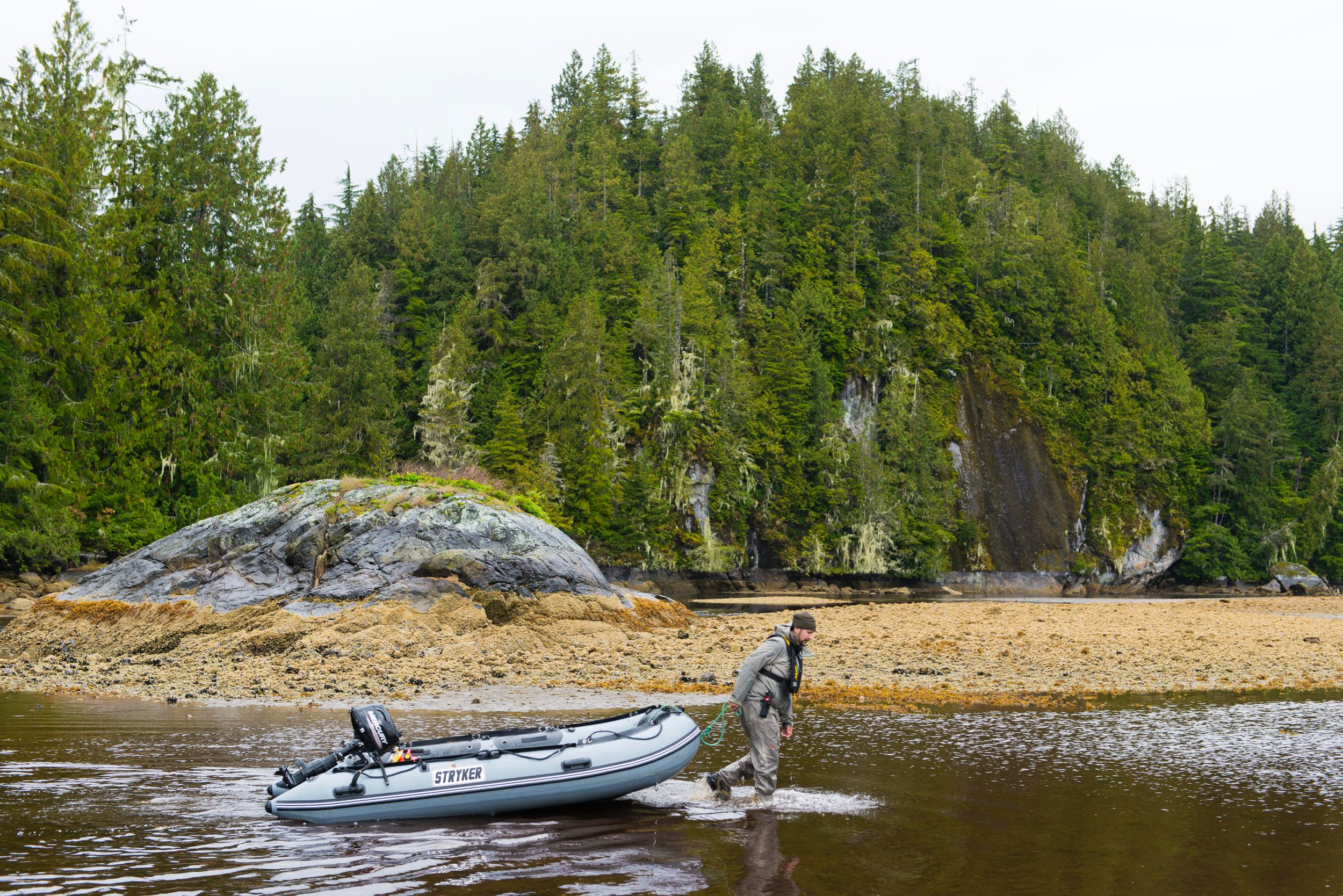
Manchmal stellt er den Motor ab, um zu lauschen: auf das Blasen der Buckelwale, das über die unbewegte See hallt. Den grollenden Donner eines Gewitters in der Ferne. Und das Platschen von Lachsen: Immer wieder schnellt einer der langen, glänzenden Körper aus dem Wasser und plumpst dann zurück. Sie sind auf dem Heimweg in die Flüsse – die Fischer der First Nations warten schon.
Sometimes he shuts down the motor in order to listen – to the blowing of the humpback whale, echoing over the motionless sea; to the rolling thunder of a distant storm; and to the splashing of the salmon. Every so often a long, shimmery body shoots out of the water and then flops back in. They’re on their way home to their spawning grounds in the river – where First Nations fishermen await them.
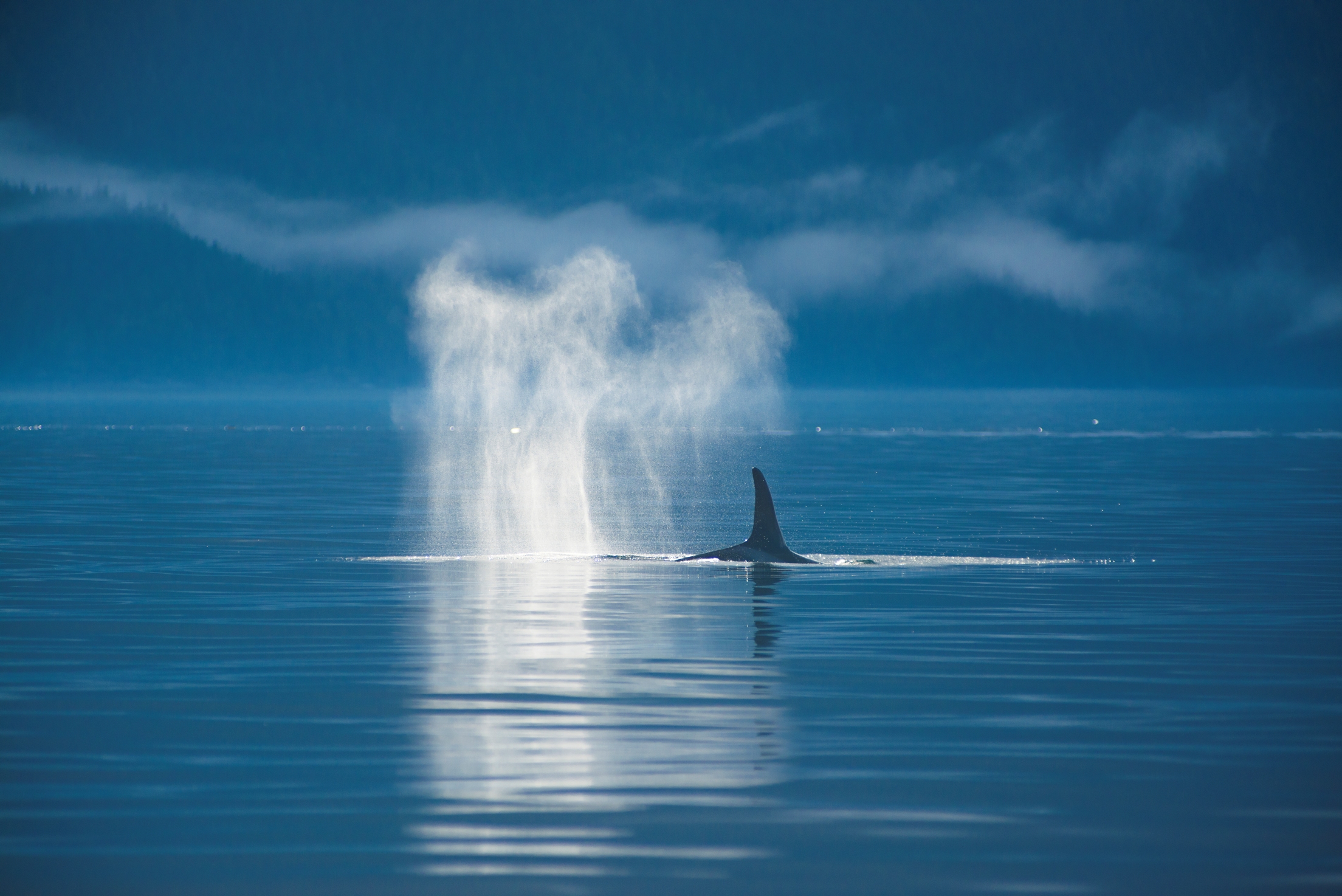
Die Recherche zu diesem Beitrag wurde unterstützt von Destination BC.
